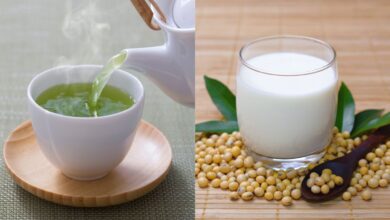Simple Strategies for Lowering Sodium Consumption to Help Control Blood Pressure
Because of food processing, a significant portion of our salt consumption comes from packaged, processed, and junk food. Experts claim that meals that don’t taste salty might yet contain significant amounts of sodium.

But since they are consumed so often, even foods like bread that have just modest salt content may still be significant sources of the mineral.
Reducing your sodium intake is recommended by doctors since it is essential for controlling blood pressure and excessive salt consumption may cause hypertension and other cardiac problems.
While some salt is essential for good health, the daily need is just around 1,500 milligrams.
The maximum amount, 2,300 mg, is barely the equivalent of one teaspoon of salt.
Strategies for cutting down on salt consumption
Here are a few simple strategies to reduce sodium:
Examine food labels.
A lot of processed foods have a lot of salt. You can detect high-sodium goods and choose lower-sodium options by carefully reading food labels. Seek for goods with the labels “sodium-free,” “no added salt,” or “low-sodium.”
Experts advise using the Nutrition Facts label to compare alternatives and determine how much salt is in meals. Select goods with a five percent daily value (DV) or less; twenty percent DV or above is considered excessive.
Always be mindful to seek for meals with the labels “no salt added” or “low sodium.”
Make the switch to healthier alternatives
Always strive to replace high-sodium meals with healthy alternatives. One may:
Instead of salty chips, have an unsalted nut snack.
Rather to purchasing manufactured sausages or bacon, cook lean meats, fish, or poultry that is fresh or frozen.
Select fresh produce whenever possible rather than frozen or canned produce.
Increase the potassium.
High-potassium foods may help reduce blood pressure, so swap out high-sodium ones for them. Here are a few excellent potassium sources:
Sweet potatoes
Cantaloupe
Bananas
legumes
Milk
Yogurt
Make use of natural salt alternatives.
To flavor your dish, you may simply swap out ordinary salt with natural salt replacements like herbs and spices.
Herbs such as parsley are a simple addition to salads, veggies, seafood, and meats. You may also season bread, snacks, soups, stews, chicken, shellfish, sauces, and rice with rosemary, saffron, and sage.
Take caution while using condiments.
Sodium is abundant in condiments including ketchup, soy sauce, barbecue sauce, and salad dressings.
Therefore, to lower total salt consumption, consider low-sodium or sodium-free versions of these condiments or use them rarely.
Sip a lot of water.
Reducing the effect of excess sodium on blood pressure may be achieved by flushing it from your body via urine by drinking water and remaining hydrated.
Physicians advise consuming eight glasses of water or more if you live in a hot area or are physically active.
Make more food at home.
Being more in control of what goes into your food when you cook and prepare your meals at home is a fantastic method to consume less salt.
Here are some suggestions to try while cooking:
When using canned food, rinse it well to remove some of the salt before consuming or cooking it.
Select less-sodium or unsalted condiments and spreads.
Remove the saltshaker from your surface.







